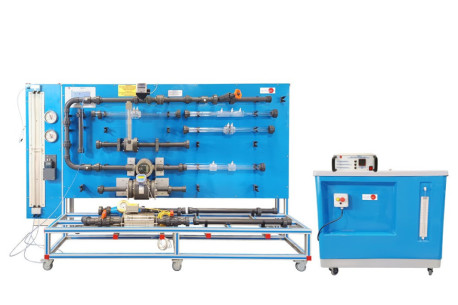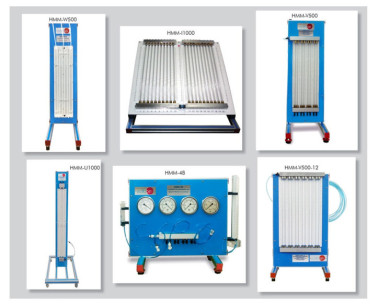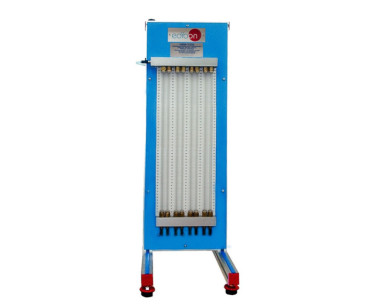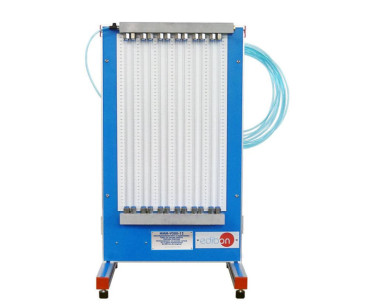HVB Equipamento de Viscosímetro de Esfera e Unidade de Determinação de Coeficiente de Resistência
SISTEMAS INOVADORES
The Drop Ball Viscometer and Resistance Coefficient Determination Unit, "HVB", designer by EDIBON, is used to determine dynamic or kinematic viscosities of fluids and the relationship between the drag coefficients of falling particles and their Reynolds number value.
LABORATÓRIOS
NOTÍCIAS RELACIONADAS
Descrição Geral
The Drop Ball Viscometer and Resistance Coefficient Determination Unit, "HVB", designed by EDIBON, consists of two precision transparent tubes fixed onto a frame in which a ball is allowed to drop down through different liquids. Both tubes can be filled with liquids of different viscosity. Thus, it is possible to compare the both liquids directly.
The unit is illuminated from behind with two fluorescent lamps to facilitate the visualization of the falling of the balls.
The ball is guided down by a guide to aid the introduction of particles at the top of the tubes with the minimum disturbance to the liquid. The unit includes several guides to facilitate the introduction of smaller balls.
During the exercises, students shall measure the falling rate of the balls by timing their passage between two marks on the walls of the tube.
Balls can be removed from the bottom of the tubes through two valves. Thus, the ball can be removed from the tube without a large loss of liquid.
Kinematic viscosity can be deduced by measuring the falling speed of a ball in a vertical tube filled with the fluid under study. During the uniform rectilinear motion phase, the forces which apply to the sphere, the gravity, the pressure of Archimedes and the force of the trail related to viscous friction are in balance.
The design of the unit is such that it is suitable both for practical trainee experiments in the fields of physics or engineering and for demonstration in the classroom.
The unit is supplied with a set of balls of different size, a stopwatch and two beakers.
EXERCÍCIOS E PRÁTICAS GUIADAS
EXERCÍCIOS PRÁTICOS GUIADOS INCLUÍDOS NO MANUAL
- Determination of the Reynolds number.
- Determination of the dynamic and kinematic viscosity of a fluid.
- Drag coefficient of various particles of spheres.
- Measurements of the spheres resistance coefficients vs Reynolds number.
- Measurement of the terminal velocities of the spheres.
EQUIPAMENTOS COMPLEMENTARES
Equipamento de Medição de Pressão
Calibrador de Manômetros de Precisão
Equipamento de Medição e Calibração de Pressão
Sistema de Calibração de Sensores de Pressão
Manômetros & Multimanômetros (vários tipos):
Manômetro Duplo em "U"
Manômetro em "U"
Multimanômetro Inclinado de 20 Tubos Manométricos de 250 mm de Comprimento
Multimanômetro, em Posição Vertical, de 8 Tubos Manométricos de 500 mm de Comprimento
Multimanômetro, em Posição Vertical, de 12 tubos manométricos de 500 mm de Comprimento
Equipamento de 4 Manômetros tipo Bourdon
Qualidade

Serviço pós-venda

 Preferências de cookies
Preferências de cookies



















